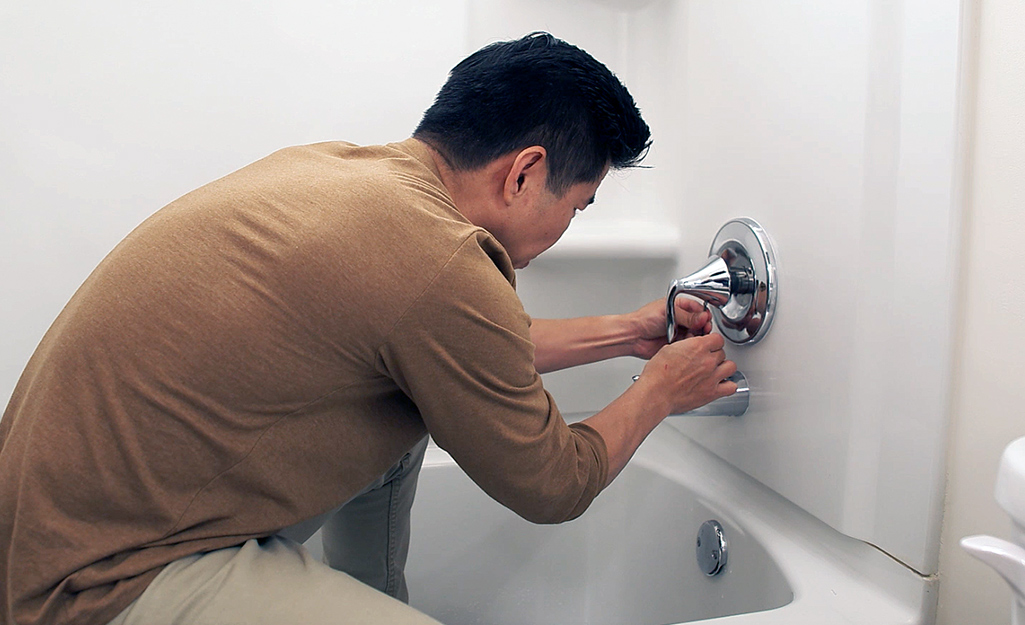We've stumbled on this post about Should I Repair or Replace a Leaky Faucet? down the page on the internet and felt it made good sense to write about it with you on this site.
:max_bytes(150000):strip_icc()/repair-leaky-single-handle-cartridge-faucet-1824629-01-3286404498a4460c80094ebf7ff39c58.jpg)
Dripping faucets may appear like a minor trouble, however their influence goes beyond just the nuisance of the sound. From drainage to incurring unnecessary economic costs and health and wellness threats, overlooking a dripping faucet can cause different consequences. In this write-up, we'll explore why it's essential to resolve this common family issue immediately and effectively.
Waste of Water
Environmental Influence
Dripping faucets add significantly to water waste. According to the Epa (EPA), a solitary faucet dripping at one drip per second can throw away greater than 3,000 gallons of water per year. This not only pressures water resources but also affects environments and wild animals depending on them.
Step-by-Step Overview to Dealing With a Dripping Tap
Devices Needed
Before attempting to take care of a leaking faucet, gather the required tools, consisting of an adjustable wrench, screwdrivers, replacement parts (such as washing machines or cartridges), and plumber's tape.
Usual Faucet Issues and Their Solutions
Identify the type of tap and the certain issue creating the drip. Typical problems consist of worn-out washing machines, rusty shutoff seats, or faulty O-rings. Refer to manufacturer instructions or on the internet tutorials for detailed support on repair services.
Financial Expenses
Boosted Water Expenses
Beyond the environmental influence, trickling taps can pump up water bills substantially. The accumulated wastefulness with time equates into greater energy costs, which could have been stayed clear of with timely repair work.
Possible Home Damage
In addition, extended trickling can cause damage to components and surfaces bordering the faucet. Water build-up can cause staining, deterioration, and even architectural concerns if left neglected, resulting in extra repair service prices.
Wellness Worries
Mold and Mildew Growth
The constant presence of dampness from a trickling tap creates an excellent environment for mold and mold development. These fungis not only compromise indoor air high quality yet additionally present wellness risks, particularly for individuals with breathing conditions or allergies.
Waterborne Illness
Stagnant water in leaking faucets can become a breeding ground for bacteria and other pathogens, raising the risk of waterborne diseases. Contaminants such as Legionella microorganisms prosper in stagnant water, potentially bring about significant health problems when ingested or breathed in.
Do it yourself vs. Professional Repair
Benefits and drawbacks of Do It Yourself Repair Service
While some may attempt to deal with a leaking tap themselves, DIY repairs include their own collection of challenges. Without correct understanding and devices, DIY efforts can exacerbate the problem or bring about insufficient repair work, extending the trouble.
Benefits of Employing a Specialist Plumber
Hiring an expert plumber makes certain that the underlying cause of the leaking tap is resolved effectively. Plumbings have the experience and equipment to diagnose and repair faucet problems effectively, conserving time and lessening the threat of more damages.
Ecological Obligation
Private Contribution to Conservation
Taking responsibility for repairing dripping taps straightens with wider initiatives toward water conservation and ecological sustainability. Every person's actions collectively make a substantial effect on protecting precious sources.
Sustainable Living Practices
By prioritizing timely repair work and adopting water-saving behaviors, individuals add to lasting living methods that profit both present and future generations.
Safety nets
Routine Upkeep Tips
To prevent leaking faucets, carry out routine maintenance such as cleaning aerators, evaluating for leaks, and changing damaged components immediately. Additionally, consider setting up water-saving devices or updating to much more reliable fixtures.
Significance of Prompt Repair Works
Dealing with dripping taps as soon as they're seen avoids further water waste and potential damages, ultimately conserving both water and money over time.
Influence On Building Value
Assumption of Well-Maintained Residential Or Commercial Property
Keeping a building in good condition, including resolving upkeep issues like leaking taps, enhances its viewed value and value among possible buyers or lessees.
Impact on Resale Value
Residences with properly maintained plumbing fixtures, including faucets, command higher resale values in the realty market. Attending to leaking taps can add to a favorable perception during home evaluations and negotiations.
Verdict
Attending to a dripping tap surpasses simple convenience; it's a crucial action towards saving water, reducing monetary costs, and protecting health and residential or commercial property. Whether via DIY repairs or expert help, doing something about it to fix dripping faucets is a tiny yet impactful means to advertise liable stewardship of sources and add to a healthier, extra lasting future.
How to Fix a Leaky Faucet: Step-by-Step Repair Guide
A leaky faucet may seem like a simple annoyance, but if it's not fixed promptly, that leak could cost hundreds to potentially thousands. From water damage to mold, mildew, and high water bills, even a tiny leak can be catastrophic if left unattended. Damage like this can even affect the overall value of your home, so it's important to take the right approach for leaky faucet repair. You may need the help of a plumber in some cases, but we've got a few tips you can try on how to fix a leaky faucet before calling the pros.
Four Faucet Types
When you're learning how to fix a leaky faucet, the first step is knowing what kind of faucet you're working with! There are four common types.
Cartridge Faucets
Cartridge faucets come in one- or two-handled varieties. In one-handled cartridge faucets, hot and cold water combines in a single cartridge. In the two-handled versions, hot and cold water are controlled separately and mixed in the faucet.
Ball Faucets
Ball faucets have a single lever you push up and down to adjust the pressure and rotate to change the temperature. A slotted metal ball controls the amount of water allowed into the spout.
Compression Washer Faucets
They're the oldest type of faucet, but they're still used in many homes — especially older ones. Compression faucets have two separate handles that, when turned, raise or lower the washer that seals a water valve. This valve stops water from flowing through the faucet when it is turned off.
Disc Faucets
Disc faucets rarely need to be repaired due to their maintenance-free design. The water flow is controlled by two discs — the upper one raises and lowers against a fixed lower disc, creating a watertight seal. If your disc faucet starts leaking, you may need to replace the seals or clean residue buildup from the inlets.
Fixing a Leaky Faucet
Step 1: Turn Off the Water
Whether you're learning how to fix a leaky bathtub faucet or how to fix a leaky kitchen faucet, always turn off the water supply to your working area when you're fixing a leak. The last thing you want is a flood added to your list of things to fix.
Look for the shutoff valves below your sink or around the tub and turn them clockwise to stop the water flow. If your faucet doesn't have shutoff valves, you may need to turn off the water for the whole house. Check to make sure it's off by turning the faucet on. If nothing comes out, you're ready to start the repair.
Step 2: Take Apart the Faucet
How you disassemble your faucet depends on the type of fixture you have. You can use a flathead screwdriver to remove the caps on top of the handle or handles for cartridge and compression faucets. Inside, you should see handle screws. Unscrew these with a screwdriver to remove the handle.
Disc- and ball-style faucets will typically have an inlet screw near the handle, and removing that will reveal the interior of the faucet.
Detach the Valve Stem
For cartridge- and compression-style faucets, you'll see the inner valve stem or cartridge once you remove the faucet handles. If you have a compression faucet, unscrew the brass valve stem. If you have a cartridge faucet, pull out the cartridge. If your cartridge has been in place for a while, it may require some tools or extra force to remove it due to mineral deposits.
Examine and Replace Parts
Once you've removed the parts, check them out to confirm what needs to be replaced. You may see corroded rubber washers, O-rings, stems, or cartridges. On a ball-style faucet, check the seats and springs for damage.
If you need to repair a leaky disc faucet, check the inlet and seals on the lower disc.
Once you determine what parts must be replaced, visit your local hardware store. Bring the damaged parts with you to ensure you can purchase the correct components to replace them.
Clean Valves and Faucet Cavity
If you've removed a stem or cartridge, you may notice mineral buildup in the faucet's threads. Use white vinegar to clean the valve seat by soaking it for a few minutes, then scrub it away with a soft toothbrush and rinse with warm water. You can also clean the interior of the faucet in the same way.
Reassemble the Faucet
Once your faucet is cleaned and the required parts have been replaced, it's time to reassemble it. Put the pieces back together and slowly turn the water supply back on. Doing this slowly is crucial because too much initial water pressure can damage the new hardware you've just installed.
https://homewarranty.firstam.com/blog/how-to-fix-leaky-faucet

As an avid reader about Leaky Faucets: Why They Happen & What to Do About Them, I was thinking sharing that portion was worth the trouble. For those who liked our blog posting if you please do not forget to pass it around. I am grateful for your time. Don't forget to stop by our website back soon.
 Kenan Thompson Then & Now!
Kenan Thompson Then & Now! Earvin Johnson III Then & Now!
Earvin Johnson III Then & Now! Tyra Banks Then & Now!
Tyra Banks Then & Now! Atticus Shaffer Then & Now!
Atticus Shaffer Then & Now! Meadow Walker Then & Now!
Meadow Walker Then & Now!